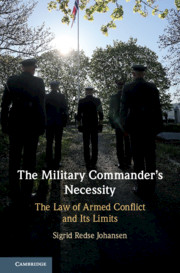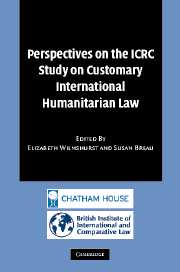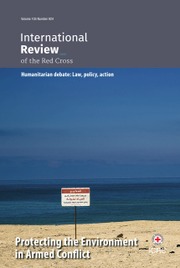The Military Commander's Necessity
The idea of military necessity lies at the centre of the law of armed conflict and yet it is less than fully understood. This book analyses which legal limits govern the commander's assessment of military necessity, and argues that military necessity itself is not a limitation. Military necessity calls for a highly discretionary exercise: the assessment. Yet, there is little guidance as to how this discretionary process should be exercised, apart from the notions of 'a reasonable military commander'. A reasonable assessment of 'excessive' civilian losses are presumed to be almost intuitive. Objective standards for determining excessive civilian losses are difficult to identify, particularly when that 'excessiveness' will be understood in relative terms. The perpetual question arises: are civilian losses acceptable if the war can be won? The result is a heavy burden of assessment placed on the shoulders of the military commander.
- Offers a comprehensive contemporary analysis of the legal function of military necessity in the international humanitarian law of armed conflict, distinguishing military necessity from other legal concepts
- Presents the legal limits to the military commander's assessment of military necessity during conduct of hostilities and makes the application of the abstract legal concept of military necessity more concrete and exemplified for armed forces
- Discusses the balance between the commander's room for subjective manoeuvre with objective limits to their assessment of military necessity, showing how both a commander's margin of appreciation and objective legal limits are indispensable and intertwined
Reviews & endorsements
‘Johansen’s contribution is an important one that adds to the repudiation of the discredited, but stubbornly irrepressible, concept of kriegsraison geht vor kriegsmanier-the assertion that 'necessity knows no law.'’ Beth Van Schaack, American Journal of International Law
Product details
November 2019Hardback
9781108493925
448 pages
235 × 157 × 28 mm
0.77kg
Available
Table of Contents
- 1. Introduction
- Part I. Concept, History and Basics:
- 2. Elements of military necessity
- 3. Military necessity and a historical outset
- 4. Assessing military necessity through a military margin of appreciation
- 5. Assessing necessity and criminal responsibility
- 6. Military necessity and humanitarian considerations
- Part II. Distinction as Limitation Upon Military Necessity in the Law of Armed Conflict:
- 7. The principle of distinction: also a limitation upon military necessity
- 8. Military objects
- 9. Combatants as lawful targets
- 10. Military necessity and the notion of 'lawful combatancy'
- 11. Who are civilians and when do they lose their protection?
- Part III. Effectuating Distinction – Enforcing an Ultimate Balance Between Necessities of War and Considerations of Humanity:
- 12. Protection of the civilian population and perceptions of military necessity
- 13. Military necessity and proportionality
- 14. Military necessity and the scope and nature of military advantage
- 15. The commanders ultimate 'margins': assessing excessiveness and feasibility
- Part IV. The Exceptive Face of Military Necessity:
- 16. Destruction and seizure of property when military necessity requires
- 17. Military necessity and rules on special protection
- Part V: Conclusions:
- 18. Conclusions – limitations to the commander's assessment of military necessity
- Bibliography
- Index.








